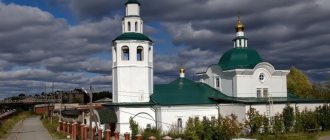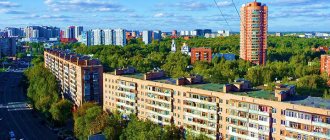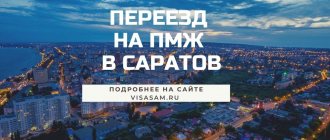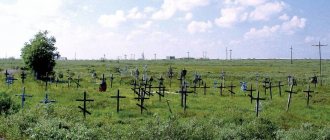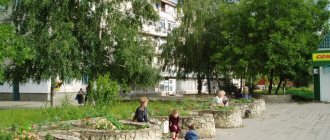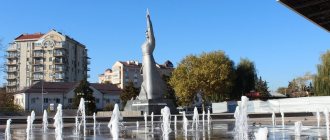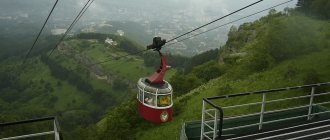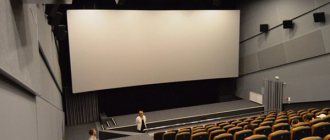The Perm region today is an administrative-territorial division that includes 25 cities, 26 urban-type settlements (urban-type settlements) and also smaller villages, the total population of which is 2,599,260 people. At the same time, the Perm region includes a territory with a total area of 160,237 km2. Thus, the population density here today is 16.22 people / square kilometer.
But the specificity of the distribution of residents here is such that citizens predominantly populate urban areas and urban settlements, but in villages, hamlets and towns the number of residents is insignificant. If we consider these data in percentage terms, then the urban population in the Perm Territory accounts for almost 76%, which indicates an uneven distribution of people throughout the region.
Current data
Today, 2,599,260 people live in the Perm Territory. Thus, in terms of population, this region occupies 17th position among other regions and republics. Moreover, over the past few years there has been a tendency towards a decrease in the number of residents in this region.
If we talk directly about the percentage of the total number of residents of the Russian Federation, then this figure is 1.77%.
This region is distinguished by the following features:
- The climate here is moderate.
- Most of the area is located on the plain - about 85%, the rest is mountain formations.
- There are about 40 rivers here, most of which are small in terms of water flow. The main ones include Kama, Vishera, Chusovaya.
- The flora is represented mainly by forests.
- The economy is one of the most developed in Russia due to a highly developed industrial complex. It includes the oil industry, chemical industry, heavy engineering, metallurgy (non-ferrous and ferrous), as well as logging.
- From the point of view of the development of science, there are currently about 30 universities and other special educational organizations operating here.
Climate of Berezniki
The Russian north near the Ural Mountains is not the most weather-friendly place. Winter frosts down to -30 °C are not uncommon; snow lasts from October to April.
The climate is moderate continental, characterized by long, rather harsh winters and short, cool summers. The average temperature for the year is 0.9 °C, the average temperature in July (the warmest month) is 17 °C, in January (the coldest) - -14 °C.
Statistics by year
If we consider how the population of the Perm Territory has changed, here are the figures given by Rosstat of the Russian Federation:
- In 1939 - 2,087,518 people.
- In 1959 – 2,992,876.
- In 1970 – 3,023,443.
- In 1987, the population stopped arriving at the same rate as before, so the number of people during this period, even for a number of objective reasons, decreased and amounted to only 3,011,540 citizens.
- By 1990, the number of people living in this territory was 3,027,958.
- By 1996, the recession continued to accelerate, leading to even greater declines. The number of people here has dropped to 2,943,491.
- And this trend continued until 2012. By this period, the number of people in the region was 2,631,073.
- From that moment on, the dynamics changed somewhat in a positive direction. And, although the increase did not increase too quickly, it was still present. Therefore, by 2015, 2,637,032 began to live here.
- But this is where the growth stopped, since until 2022 the trend toward population decline resumed again. For the current calendar period, the number of Russians populating this territory is 2,599,260 people.
Famous personalities
In his youth, Boris Yeltsin lived in Berezniki, whose father worked at Khimstroi - first as a foreman, and later as the head of the construction department (by the way, teachers testified that the future first president of Russia had problems with discipline, despite good grades).
Other famous Berezniki residents:
- director Stanislav Govorukhin;
- actor Georgy Burkov (he served in the local theater);
- poet and writer Alexey Reshetov, whose monument was mentioned above;
- Sambo champion Svetlana Burtseva;
- hockey players Sergei Zemchenok and Mikhail Mikhailov;
- swimming champion Vladimir Selkov;
- ballet dancer Sergei Tsvetkov;
- composer Vladimir Kobekin.
Berezniki has given the country many outstanding athletes (in particular, those currently performing in the international sports arena) and several medical dynasties. Most of the local politicians are also natives of the Perm region.
Cities
If we consider the population in the Perm Territory not in general, but specifically by settlements, by main cities, then here is the data provided by Rosstat for the period 2022:
- Perm - 1,059,934 people.
- Berezniki – 141.276.
- Usolye city – 6368.
- Gornozavodsk - 11274.
- Kungur city – 65.824.
- Tchaikovsky urban district - 104.306.
- The population of the city of Kudymkar is 30,904.
- Vereshchagino – 21.648.
- Kiesel - 14.162.
- Dobryanka – 32.304.
- City of Chusovoy – 44.185.
- Kudymkar – 30.904.
- Gubakha – 19.472.
- Krasnovishersk – 15.023.
- Chernushka – 32.954.
- Chusovoy municipal district has a population of 66,381, while the city itself is 44,185.
- Oktyabrsky Municipal District - 27.139.
- Wasp – 20.899.
Data for 2010
Reviews from residents and tourists
Galina, Gubakha
I don’t want to impose my opinion on anyone, but I’m one of those who didn’t like the Wagner monument. Indeed, the man who did so much for the entire Perm region could have been portrayed more representatively. And at the monument there was some cheerful fat man, you can see it even in the photo.
Ivan Anatolyevich, pos. Eagle
I wonder if there is some place to look down on the panorama of the city? The description of the failures is intriguing. I have been to Berezniki many times and heard a lot about them, but for some reason I paid almost no attention.
Igor, Kudymkar
I lived in Berezniki until the 2000s, this is my youth! There is a tree in the park that my father climbed as a child. A lot has changed now, but I still feel nostalgic when I come there. And I advise all Perm residents to go at least once, preferably in the summer.
Natural movement
Considering migration flows and population growth in the region, it is worth noting the following stages. Peak growth rates occurred in the following periods (number of people arriving per 1,000 population):
- 1975 – 7.4 people.
- 2001 – 6 people.
- 2004 – 6.3 people.
- If we talk about natural loss, here is when it was maximum:
- In 2000, for every thousand people, 6 citizens traveled to other cities or outside the country.
- In 2005, this figure was 7 people.
It is worth noting that the fluctuation figures have now decreased significantly. Deviations in both directions, both increasing and decreasing, became less significant. But still, the general trend is downward, which is due to a number of internal processes at the level of the entire country.
This can include a not very satisfactory level of medical care, small opportunities in terms of earning money and developing your own business. As well as a number of other factors that local residents assess as not very satisfactory, due to which negative population growth is formed, that is, in fact, a steady decline, although not having a global scale.
Population size and composition
In 1937, it was planned that from a population of 110,000 people, the population of Berezniki would grow to 250,000 by 1947, but the Great Patriotic War made its own adjustments.
Of the 65,000 Berezniki residents who lived in the city at the beginning of 1940, more than 8,000 did not return from the fronts - the city lost a large part of its working-age male population.
At the same time, the city of Berezniki became an evacuation center, receiving more than 30,000 civilians from the battlefields and many tons of equipment from closed enterprises (it was later used to make ammunition on the rear).
The next population census was carried out only in 1959, and according to its results, Berezniki became home to 106,000 citizens. The city experienced its demographic maximum in the late 80s, when its population numbered more than 200,000 people.
Nowadays young people prefer larger cities and often leave to study and work in regional and regional centers and capitals.
The basis of the population of Berezniki are people of retirement age and families of factory workers; Among able-bodied city residents, the majority are men, and among pensioners, women.
Migration
In general, in this region of the Russian Federation, migration characteristics are described by an increased number of people leaving in relation to those arriving here. This is confirmed by the following figures from Rosstat:
- Arrivals in the region in 2022 amount to 76,555 people.
- But those who left were 80,318.
- As for those who move, and especially leave this part of the country, they are distributed as follows:
- The overwhelming majority – 72,652 citizens – move within Russia. That is, from Perm they move to other regions of the state.
- But in 2022, 3,903 people left for permanent residence in other countries, both near and far abroad.
As can be seen from the presented figures, the dominant component of migration processes is movement within the state. This is caused by the uneven distribution of benefits and employment opportunities. The situation can only be changed by numerous support measures implemented at the level of the state in general and the region in particular.
Interesting facts and stories
The discovery of sinkholes worried city residents and the administration and greatly affected everyday comfort - for example, in 2014 the station had to be closed because the railway tracks were in danger of collapse.
Since then, communication with Berezniki has been carried out only by road (it takes about 3 hours to drive from Perm). The post office does not always cope with the load, so many citizens prefer to use the services of SDEK and similar courier companies, which is not very convenient.
Despite the danger of sinkholes, city residents are accustomed to treating their appearance with humor and even giving them affectionate names. Thus, in Berezniki there are sinkholes bearing the popular names Malysh, Krokha, Kotya, Piglet (it opened fifth in a row) and Pancake (formed on Maslenitsa 2015).
Urban folklore is replete with legends. They are told more skeptically than seriously, but nevertheless they are passed on from mouth to mouth.
These are stories about the Mistress of the Potassium Mountain, who once appeared to the workers in the mine, about the special atmosphere of the Triangular Square, which was landscaped by V. Mindovsky, thereby improving the health of the place where the wounded were taken during war times.
There is also a kind of “conspiracy theory” - about nuclear reactors hidden by the state in the depths of the First Potash Mine. This is unlikely to be true, but it is undeniable that people who create a mysterious, fairy-tale information background around their hometown love their small homeland.
Ethnic composition
The ethnic composition of the region looks like this in 2022:
- Russians – 80.87%.
- Tatars – 5.54%.
- Komi-Permyaks – 4.56%.
- Bashkirs - 1.32%.
- Udmurts - 0.73%.
- Belarusians – 1.1%.
- Ukrainians – 2.4%.
- Germans – 1.3%.
- Azerbaijanis – 0.03%.
- Armenians – 0.08%.
- Chuvash – 0.51%.
- Uzbeks – 0.03%.
- Mari - 0.19%.
- And others in a small percentage.
Economy
BTZ trolleybus and railway station in Berezniki Trolleybus trolleybus in Berezniki Accident in the city of Berezniki at the first potash plant
After the collapse of the Soviet Union in 1991, the city's population decreased due to rising unemployment. However, the city was able to maintain its main industries. Large chemical plants such as titanium and sodium factories, as well as several huge Potassium, Magnesium and Potash mines operate in Berezniki.
The potash mine, owned by Uralkali, was the basis of the fortune of Dmitry Rybolovlev, who sold his stake in 2010 to Suleiman Kerimov. The mine supports in a huge underground mine, approximately 1,000 feet (~300 meters) below the city, are made of soluble salt, which is dissolved by flooding the mine with water. The town, a former Soviet-era labor camp, was built next to the work site, above the mine. Several craters, some huge, opened within the city. The situation requires round-the-clock monitoring. The problem is believed to be limited to a small part of the mine that was not properly backfilled and its future impact will be limited, but relocation of the town is being considered.[11] The largest crater, dubbed "Grandfather" by 2012, was 340 yards (~310 meters) wide, 430 yards (~390 meters) long, and 780 feet (~240 meters) deep.[11] When it opened in 2007[12] the pit was originally 80 m long, 40 m wide and 200 m deep.[13] The sinkhole was expected to expand and destroy part of the only railway line that leads to and from the potash mines, and since Berezniki produces about 10% of the world's potash fertilizer, this would increase global demand for Canada, potentially damaging the local economy. No one was injured when the crater formed.
Gender and age
The distribution of citizens in this region by gender is as follows. For every 1000 men there are the following number of women:
- 2005 – 1173.
- 2010 – 1183.
- 2015 – 1177.
- 2017 – 1176.
As can be seen from the presented data, the percentage of men to women remains practically unchanged. As for age characteristics, the distribution here is as follows:
| Age parameter | Men | Women |
| 0-4 g. | 2,74 | 3,15 |
| 5-9 years | 2,49 | 3,59 |
| 10-14 years | 2,51 | 2,96 |
| 15-19 years old | 3,69 | 2,62 |
| 20-24 years old | 4,49 | 2,29 |
| 25-29 years old | 3,95 | 3,05 |
| 30-34 years | 3,99 | 4,2 |
| 35-39 years old | 3,53 | 3,79 |
| 40-44 | 3,48 | 3,43 |
| 45-49 years old | 4,37 | 3,14 |
| 50-54 | 4,38 | 2,63 |
| 55-59 years old | 3,96 | 2,97 |
| 60-64 years old | 2,04 | 2,74 |
| 65-69 years old | 2,81 | 2,16 |
| 70-74 l. | 2,34 | 1,26 |
| 75-79 l. | 2,1 | 0,51 |
| 80-84 | 1,33 | 0,51 |
| 85-89 l. | 0,42 | 0,17 |
| 90 or more. | About 0.15 | About 0.05 |
Map
| Berezniki: maps |
Berezniki: photos from space (Google Maps) Berezniki: photos from space (Microsoft Virtual Earth)
| Berezniki. Nearest cities. Distances in km. on the map (in brackets along roads) + direction. Using the hyperlink in the distance , you can get the route (information courtesy of the AutoTransInfo website) | |||
| 1 | Usolye | 5 (9) | IN |
| 2 | Solikamsk | 24 (26) | WITH |
| 3 | Yaiva | 29 (27) | IN |
| 4 | Alexandrovsk | 53 (57) | SE |
| 5 | Kizel | 63 (71) | SE |
| 6 | Ugleuralsky | 70 () | SE |
| 7 | Gubakha | 77 (95) | SE |
| 8 | Chermoz | 79 (407) | SW |
| 9 | Dobryanka | 107 (129) | YU |
| 10 | Cherdyn | 110 (134) | WITH |
| 11 | Krasnovishersk | 110 (139) | WITH |
| 12 | Gremyachinsk | 112 (138) | SE |
| 13 | Ilyinsky | 113 (258) | SW |
| 14 | Yusva | 115 (400) | SW |
| 15 | Scythe | 116 (530) | NW |
a brief description of
The city is located in the Urals, 278 km north of Perm. The port is on the left bank of the Kama Reservoir (connected by a bridge to the town of Usolye). Railway station.
Territory (sq. km): 431
Information about the city of Berezniki on the Russian Wikipedia site
Historical sketch
The city is located on the richest deposits of potash, magnesium and table salt. On the site of the modern city in the 17th century. there were salt-making industries. In 1873, at the site of the fields, Perm industrialist I.I. Lyubimov built the Bereznikovsky salt plant, and in 1883 a soda plant (one of the first in Russia).
There was once an island off the left bank of the Kama, called Berezovy after the predominant vegetation. Over time, the channel separating the island became overgrown and a tract called Bereznik arose.
In 1929, the construction of the Berezniki chemical plant and the development of potassium salt deposits began in the tract. It was decided to unite the scattered workers' settlements that arose during construction into a city, for which the names Khimgrad, Khimstroy, Dzerzhinsk, Verkhnekamsk and Bereznyakovsk were proposed. By decree of the All-Russian Central Executive Committee of March 20, 1932, the city of Berezniki was formed from the city of Usolye-Solikamskoye (11.7 thousand inhabitants, 1931) and the working villages of Veretiya, Dedyukhino, Lenva, Ust-Zyryanka and Churtan. The city of Dedyukhin (founded in the 19th century, a city since 1805, a village since 1918, 3.3 thousand inhabitants - 1897, 4.7 thousand inhabitants, 1931), the village of Veretia (urban settlement from August 27, 1928, 2.5 thousand inhabitants. , 1931), the village of Lenva (PGT from 08/27/1928, 7.8 thousand inhabitants, 1931), the village of Ust-Zyryanka (PGT from 02/25/1929, 1.4 thousand inhabitants, 1931), Churtan (PGT from 08/27/1928, 4.7 thousand inhabitants, 1931).
On August 30, 1940, the city of Usolye was separated from the city of Berezniki.
Municipal indicators
| Index | 1999 | 2001 | 2003 | 2005 |
| Demography | ||||
| Number of births, per 1000 population | 8.4 | 9.1 | 10.5 | 10.5 |
| Number of deaths, per 1000 population | 14.7 | 15.8 | 17.2 | 17.8 |
| Natural increase (decrease), per 1000 population | -6.3 | -6.7 | -6.7 | -8.3 |
| Standard of living of the population and social sphere | ||||
| Average monthly nominal accrued wages, rub. | 2212 | 4045 | 5642 | 8542.4 |
| Average housing area per inhabitant (at the end of the year), sq.m. | 17.2 | 18.1 | 19.2 | 19.8 |
| Number of preschool institutions, pcs. | 76 | 73 | 69 | 69 |
| Number of children in preschool institutions, thousand people | 8.1 | 8 | 8.1 | 8.4 |
| Enrollment of children in preschool educational institutions (at the end of the year), as a percentage of the number of children of the corresponding age, % | 82.9 | 83.3 | ||
| Number of daytime educational institutions (at the beginning of the school year), pcs. | 34 | 34 | 31 | 30 |
| Number of students in daytime educational institutions, thousand people | 23.6 | 21.7 | 19.2 | 16.9 |
| Number of doctors, people. | 866 | 866 | 718 | 690 |
| Number of nursing staff, people. | 2511 | 2399 | 2100 | 1997 |
| Number of hospital institutions, pcs. | 7 | 7 | 7 | 7 |
| Number of hospital beds, thousand units | 2.3 | 2.2 | 2.1 | 1.6 |
| Number of medical outpatient clinics, pcs. | 15 | 9 | 9 | 9 |
| Capacity of medical outpatient clinics, visits per shift, thousand units. | 7.6 | 4.3 | 4.4 | 4.4 |
| Number of registered crimes, pcs. | 6021 | 6401 | 5742 | 10225 |
| Persons who committed crimes were identified, persons. | 2951 | 3039 | 2177 | 2509 |
| Economy, industry | ||||
| Number of enterprises and organizations (at the end of the year), pcs. | 1953 | 1908 | 2160 | 2470 |
| Number of operating enterprises by type of activity: mining (at the end of the year), pcs. | 5 | |||
| Number of operating enterprises by type of activity: manufacturing (at the end of the year), pcs. | 103 | |||
| Number of operating enterprises by type of activity production and distribution of electricity, gas and water (at the end of the year), pcs. | 28 | |||
| Volume of shipped goods of own production by type of mining (in actual prices), million rubles. | 1668.5 | |||
| Volume of shipped goods of own production by type of manufacturing (in actual prices), million rubles. | 31501.3 | |||
| Volume of shipped goods of own production by type of production and distribution of electricity, gas and water (in actual current prices), million rubles. | 845.1 | |||
| Construction | ||||
| Volume of work performed by type of activity “Construction” (until 2004 - volume of work performed under construction contracts), million rubles. | 597.8 | 1835 | 1223.3 | 1094.4 |
| Commissioning of residential buildings, thousand sq.m. of total area | 14.4 | 15.6 | 2.6 | 7.9 |
| Commissioning of residential buildings, apartments | 237 | 264 | 27 | 95 |
| Commissioning of preschool institutions, places | 0 | 0 | 0 | 0 |
| Commissioning of educational institutions, places | 0 | 0 | 0 | 0 |
| Commissioning of hospital facilities, beds | 0 | 0 | 0 | 0 |
| Commissioning of outpatient clinics, visits per shift | 0 | 0 | 0 | 0 |
| Transport | ||||
| Number of bus routes (in intracity traffic), pcs. | 16 | 30 | 34 | 30 |
| Number of tram routes, pcs. | 0 | 0 | ||
| Number of trolleybus routes, pcs. | 13 | 13 | ||
| Length of operational trolleybus lines (at the end of the year), km | 27.3 | 24.8 | ||
| Number of passengers transported by buses per year (in intracity traffic), million people. | 58.5 | 31.9 | 50.1 | 13.7 |
| Number of passengers transported by trams per year, million people. | 0 | |||
| Number of passengers transported by trolleybuses per year, million people. | 29.4 | 28.1 | 14.2 | |
| Connection | ||||
| Number of residential telephone sets of the city public telephone network, thousand units. | 35.1 | 36.9 | 44.6 | 48.3 |
| Number of payphones of the city telephone network (including universal ones), pcs. | 327 | 307 | ||
| Trade and services to the population | ||||
| Retail trade turnover (in actual prices), million rubles. | 2191.1 | 2712.9 | 3967.2 | 6151.4 |
| Retail trade turnover (in actual prices), per capita, rub. | 11902 | 14744 | 22774 | 36377 |
| Index of physical volume of retail trade turnover, % compared to the previous year | 101.9 | 129.8 | ||
| Public catering turnover (in actual prices), million rubles. | 215.2 | 295.4 | 305.1 | 411.2 |
| Index of physical volume of public catering turnover, % compared to the previous year | 84.9 | 110.9 | ||
| Number of stores, pavilions (at the end of the year), pcs. | 39 | 26 | ||
| Sales area of shops, pavilions (at the end of the year), sq.m. | 10800 | 13883 | ||
| Volume of paid services to the population (in actual prices), million rubles. | 227.2 | 870.8 | 1183.3 | 1721.8 |
| Volume of paid services to the population (in actual prices), per capita, rub. | 1234.3 | 4743.1 | 6792.6 | 10182.1 |
| Volume of household services to the population (in actual prices), million rubles. | 7.1 | 11.7 | 21.3 | 26.7 |
| Volume of household services to the population (in actual prices), per capita, rub. | 38.8 | 63.5 | 122.3 | 158 |
| Investments | ||||
| Investments in fixed assets (in actual prices), million rubles. | 1133.9 | 2054.8 | 2126.5 | 4927 |
| Share of investments in fixed assets financed from budgetary funds in the total volume of investments, % | 11.8 | 6.9 | 2.4 | 1.5 |
Data sources:
- Regions of Russia. Main characteristics of the constituent entities of the Russian Federation: statistical collection. Goskomstat of Russia. - M:, 2003.
- Regions of Russia. Volume 1. Statistical collection. Goskomstat of Russia. - M:, 2001. p. 371
- Regions of Russia. Basic socio-economic indicators of cities. Statistical collection. Rosstat. - M:, 2005. p. 243
- Transport in Russia: Statistical collection. Goskomstat. - M:, 2003. pp. 112, 122
- Transport in Russia: Statistical collection. Rosstat. - M:, 2005. pp. 119, 129
- Regions of Russia. Basic socio-economic indicators of cities. 2006. Statistical collection. Rosstat. - M:, 2006. p. 227
Economy
Berezniki is one of the centers of the Russian chemical industry.
JSC Uralkali (potassium fertilizers, technical salt), PA Soda, Azot (ammonia, ammonium and sodium nitrate, complex liquid fertilizers). JSC - "Avisma" (titanium sponge, metallic magnesium, etc.), "Beraton" (dyes, photochemical and paint products). Enterprises in the electrical, metalworking, construction materials, light and food industries.
In Berezniki: deposits of potassium, magnesium and table salts.
Main enterprises
NON-FERROUS METALLURGY
OJSC "AVISMA" Titanium-magnesium plant
618421, Perm region, Berezniki, st.
Zagorodnaya, 1 Offers:
high-purity magnesium, magnesium alloys, titanium sponge, protectors made of magnesium alloys
CHEMICAL INDUSTRY
OJSC "Soda"
618403, Perm region, Berezniki,
Offers:
soda ash, synthetic detergents, sodium, quicklime, furniture
OJSC "Uralkali"
618426, Perm region, Berezniki, st.
Pyatiletki, 63 Offers:
potassium-containing fertilizers, complex fertilizers, balneological salts, unique speleological chambers
Beraton LLC
618421, Perm region, Berezniki, st.
Bereznikovskaya, 202 Offers:
synthetic dyes, aniline, urea, burnt magnesia
Culture, science, education
Drama Theater.
Museum of Local Lore.
Universities of the city
Berezniki branch of Perm State Technical University
618404, Perm region, Berezniki, st. Telmana, 7 WWW: https://www.bf.pstu.ac.ru/
Berezniki branch of Perm State University
618426, Perm region, Berezniki, Yubileinaya st., 99
Ural State Economic University (Berezniki branch)
618400, Perm region, Berezniki, st. Lenina, 33
Museums, galleries, exhibition halls
Berezniki Historical and Art Museum named after. I.F. Konovalova 618400, Perm region, Berezniki, Lenin Ave., 43 Phone(s): (242) 6-48-79 Website: https://www.museum-berezniki.ru/
| Population by year (thousands of inhabitants) | |||||||
| 1926 | 19.7 | 1982 | 189 | 2005 | 169.9 | 2015 | 149.0 |
| 1939 | 64.6 | 1986 | 198 | 2006 | 168.3 | 2016 | 146.6 |
| 1959 | 106.1 | 1989 | 201.2 | 2007 | 167.0 | 2017 | 145.1 |
| 1962 | 120 | 1992 | 197.4 | 2008 | 166.0 | 2018 | 143.1 |
| 1967 | 134 | 1996 | 182.9 | 2010 | 164.1 | 2019 | 141.3 |
| 1970 | 145.6 | 1998 | 182.1 | 2011 | 156.5 | 2020 | 139.2 |
| 1973 | 154 | 2000 | 181.9 | 2012 | 154.6 | 2021 | 137.1 |
| 1976 | 174 | 2001 | 181.3 | 2013 | 153.0 | ||
| 1979 | 185.4 | 2003 | 173.1 | 2014 | 150.7 | ||
Forecast
Today there is the following forecast data for this region:
- The number will continue to decrease and there will be an outflow.
- But as for the length of stay, according to forecasts it will increase.
- If we look at the birth rate, it is expected that it will decline slightly. Despite the fact that in recent years this parameter has increased.
- Therefore, to improve the situation, government intervention will be required with the introduction of various programs designed to support young families, business support, and the formation of medical clusters with the provision of quality medical services. As well as various other measures that can strengthen industry, business and other areas in the region.
Coat of arms, flag and anthem of the city
The coat of arms of Berezniki is a silver shield crossed diagonally by a blue ribbon-sash, symbolizing the Kama River, on which the city stands. Against the background of the bandage, three white equilateral crystals are depicted - this is sylvite (potassium chloride), a mineral that is rich in the Permian subsoil.
In the upper right corner there is a smaller version of the coat of arms of Perm - with a bear on a red background - as a sign that Berezniki belongs to the jurisdiction of the Perm region.
The city's flag depicts the same blue (azure) sash crossing a white background horizontally in the center. On it are the same three equilateral crystals of potassium salt.
It is curious that in the Berezniki anthem there is nothing about sinkholes, or even about mines in general. The city appears before the listener’s eyes, framed by greenery and beloved by the townspeople. Indeed, the forests around Berezniki are surprisingly dense, and the Kama River is beautiful and majestic even in cold weather, covered with ice.
Recommendations
Notes
- ^ a b c d f
Law No. 416-67 - ^ a b c d Encyclopedia of Russian Cities
. Moscow: Great Russian Encyclopedia. 2003. p. 46. ISBN 5-7107-7399-9. - "Site of the City Duma." Archived from the original on November 12, 2017. Retrieved August 26, 2009.
- ^ a b
Federal State Statistics Service of Russia (2011).
“All-Russian Population Census 2010. Volume 1" [All-Russian Population Census 2010, vol. 1]. All-Russian Population Census 2010 [All-Russian Population Census 2010]
(in Russian). Federal State Statistics Service. - "26. The size of the permanent population of the Russian Federation by municipalities as of January 1, 2022.” Federal State Statistics Service. Retrieved January 23, 2022.
- ^ a b c
Law No. 1983-434 - "On the calculation of time." Official Internet portal of legal information
(in Russian). June 3, 2011. Retrieved January 19, 2022. - Post office. Information and computing center of OASU RPO. ( Post office
).
Search for postal facilities ( Search for postal facilities
) (in Russian) - Federal State Statistics Service of Russia (May 21, 2004). “The population of Russia, the constituent entities of the Russian Federation as part of federal districts, urban settlements, urban settlements, settlements, settlements of 3 thousand or more people.” [Population of Russia, its federal districts, constituent entities of the Federation, districts, urban settlements, rural settlements - administrative centers and rural settlements with a population of more than 3000 people] (XLS). All-Russian Population Census of 2002 [All-Russian Population Census of 2002]
(in Russian). - “All-Union Population Census of 1989. The actual population of union and autonomous republics, autonomous regions and districts, territories, regions, urban settlements and villages. On the administrative-territorial structure of the Perm Territory.” Came into force from the moment of publication. Published: “Zvezda”, No. 38, March 12, 1996 (Legislative Assembly of the Perm Region. Law No. 416-67 of February 28, 1996 On the administrative-territorial structure of the Perm Territory
As amended by Law No. 504-PK dated 07/09/2015.
On amendments to the Law of the Perm Region "On the administrative-territorial structure of the Perm Territory"
. Valid from the moment of publication.). - Legislative Assembly of the Perm Region. Law No. 1983-434 of December 27, 2004 “On approval of borders and on granting the status of a municipal entity” City of Berezniki “Perm Territory”, as amended. Law No. 499-PK of October 16, 2009 “On amendments to the legislative acts of the Perm region and the Komi-Permyak Autonomous Okrug.” Came into force ten days from the date of official publication. Published: “Zvezda”, No. 217–218, December 30, 2004 (Legislative Assembly of the Perm Region. Law No. 1983-434 of December 27, 2004 On establishing boundaries and assigning status to the municipal formation “city of Berezniki” of the Perm Territory
As amended by the Law dated October 16, 2009 No. 499-PK.
On amendments to various legislative acts of the Perm region and the Komi-Permyak Autonomous Okrug
... Valid from the day that is ten days after the day of official publication.).

